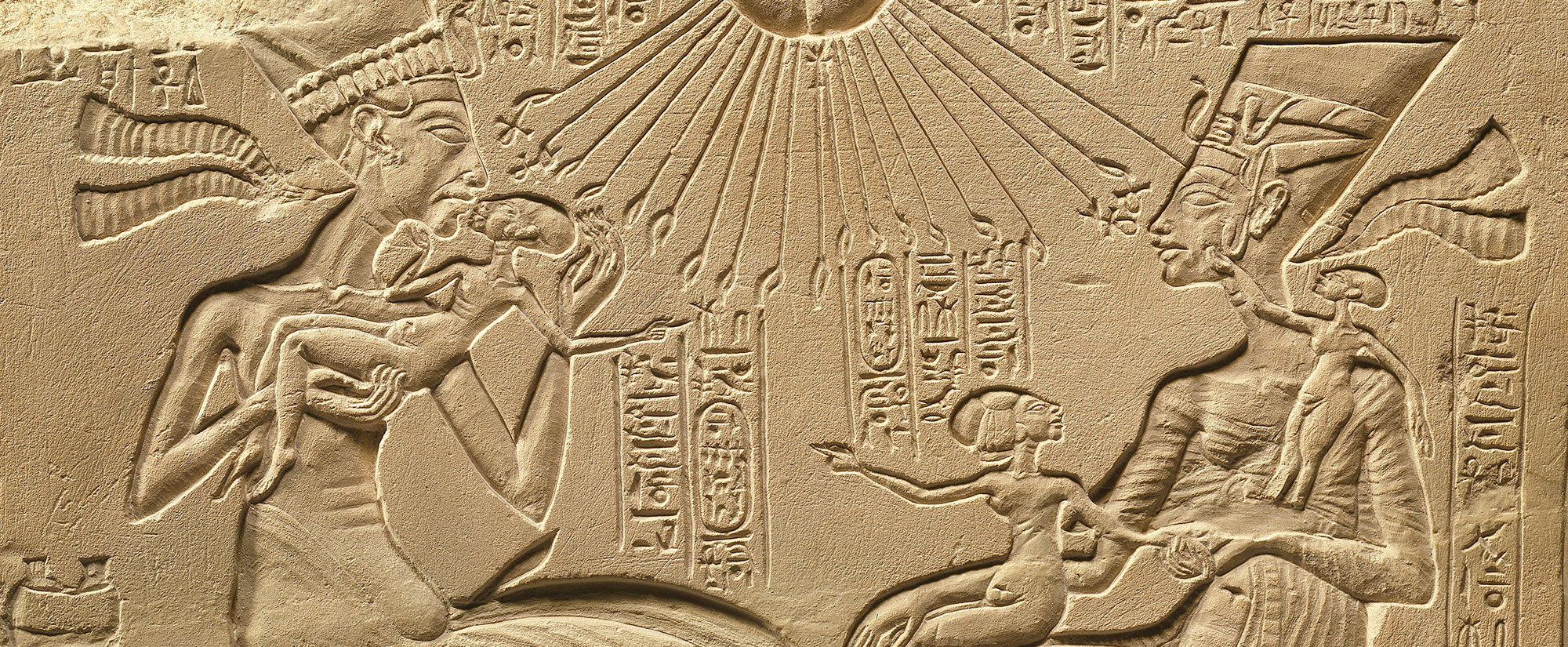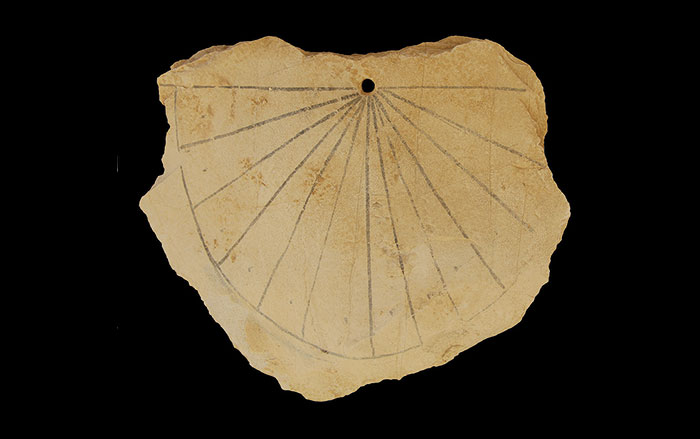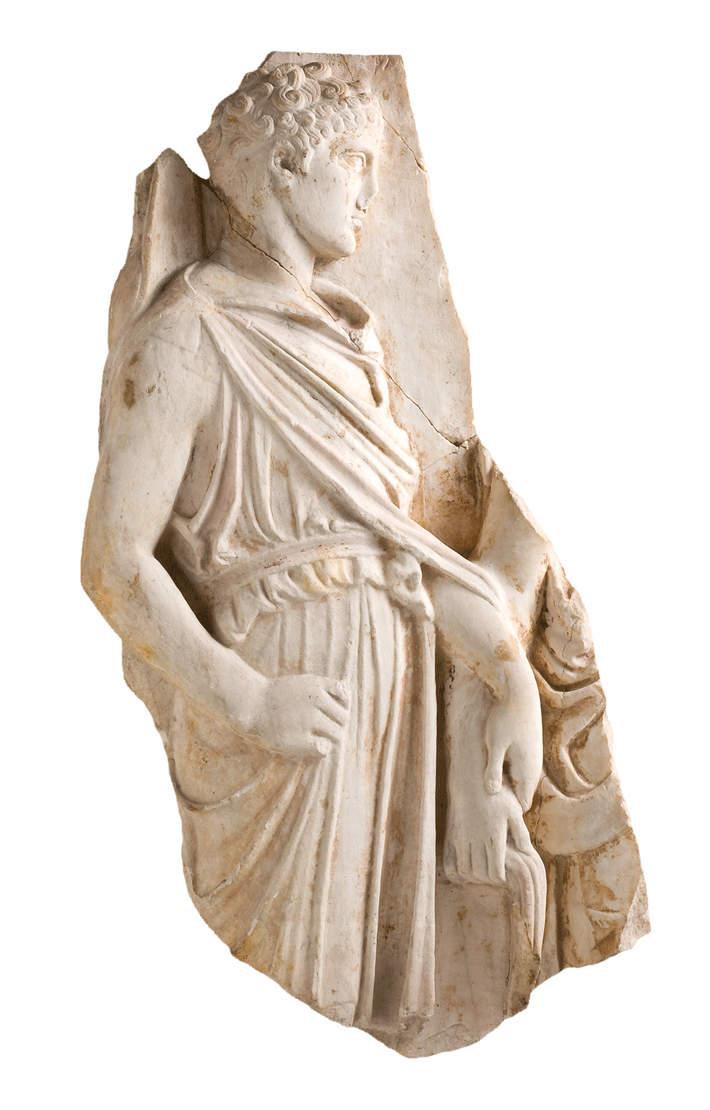
Nearly two thousand years after the Egyptian pharaoh Khufu marshaled armies of workers to build his 480-foot-tall Great Pyramid of Giza, the armies of Nubia (a region that is now in Sudan) invaded and occupied Egypt. It was 730 B.C. and, by then, the Egyptian pharaohs had long since abandoned the practice of erecting massive tombs. It was expensive to do so, and it had nearly bankrupted them. But the pyramids clearly fascinated the Nubian kings. They ruled Egypt during the 25th Dynasty, until they were ejected in 656 B.C., but Egypt’s influence on their own cultural practices was long-lasting. As ongoing archaeological work shows, the inhabitants of Nubia, particularly those in the kingdom of Meroe, found a way to imitate Egypt’s monuments. At the Meroitic royal cemetery, 80 radically downsized pyramids were constructed over the tombs of kings and queens. And now, new excavations at Sedeinga, a necropolis of the same era but 450 miles from Meroe, tell us that the practice of building diminutive pyramids trickled down from royals to the wealthy elite much more extensively than previously believed. Sedeinga contains a dense field of small pyramids, one just 30 inches across. “It is a crazy site,” says Vincent Francigny, a research associate at the American Museum of Natural History and codirector of the excavations at Sedeinga. “I’ve never seen a cemetery like this, with so many small monuments packed so closely together.”

Since a French explorer first described the cemetery at Meroe in the early nineteenth century, archaeologists have identified the remains of more than 220 royal pyramids in Sudan. Excavations show that early in the Meroitic period (ca. 300 B.C.–A.D. 350), pyramids were built exclusively for those of noble blood. “It would have been sacrilege to erect a pyramid for a nonroyal person,” says Francigny. But later in the kingdom’s history the taboo was relaxed somewhat, and a few wealthy people were allowed to erect monuments for themselves. But their pyramids never rivaled the royals’ in size. Royal or not, Nubians would have viewed the pyramids much as the ancient Egyptians did. For the pharaohs, pyramids were symbols of the sun, their massive, steep sides representing the angle of the sun’s rays reaching earth. The people of Meroe elaborated on this theme by adding capstones to their pyramids shaped in classic Egyptian forms, such as birds or lotuses emerging from solar discs.
In Meroe, two scripts were used that were also inspired by Egypt. But the Meroitic language was considered untranslatable until philologist Claude Rilly, who heads the French Archaeological Mission to Sudan, made some headway beginning in the 1990s. Fewer than 2,000 Meroitic inscriptions are known to exist, many of them funerary inscriptions. To continue his translation effort, Rilly needed more. But he had a problem: Rising waters from dam projects on the Nile over the past decade have inundated most of the recently discovered Meroitic-era cemeteries. The nonroyal cemetery of Sedeinga, which lies on the west bank of the Nile, not far from the Egyptian border, is one of the few already known sites left in Sudan where archaeologists can still excavate graves from the Meroitic period. Rilly and Francigny, an expert in Meroitic funerary monuments, reasoned that uncovering burials at Sedeinga could turn up all-important new inscriptions. This, in large part, is what led them to assemble a team to begin excavating at the site in 2009.

In four years, the team has recovered five new inscriptions, but they also discovered something astonishing. They expected to unearth a modest number of burials, but it didn’t take long before Francigny and his colleagues realized that the cemetery had once held thousands of burial chambers, many of which lay beneath small pyramids. In less than half an acre, they discovered the bases of 35 pyramids. The largest was 22 feet wide and once stood just over 30 feet high. Much smaller monuments, such as the 30-inch-wide pyramid, were built over the graves of children. “It’s a fantastic gathering of pyramidal structures,” says Francigny. “In other cemeteries of this time you might have 20 to 30 elite graves with monuments. But here we have hundreds of pyramids, with thousands of associated graves around them, many built on top of each other.”
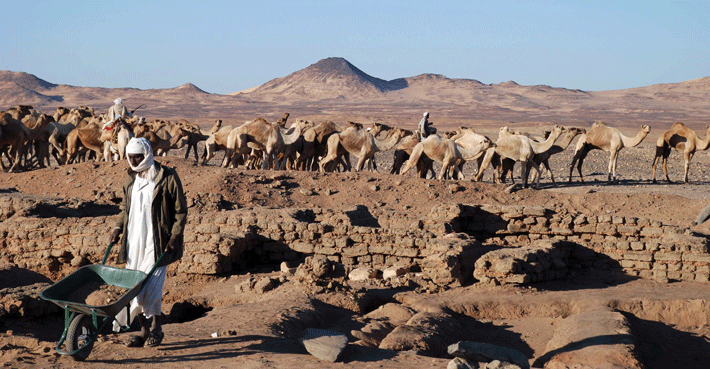
Most of the burials at Sedeinga date to later in the history of the kingdom, when the royal monopoly on pyramid buildings was eased. But for Francigny, that alone doesn’t explain the sheer number of monuments, which is unique in Nubia. He thinks geography might have also played a role. Francigny notes that the site was isolated from the royal and administrative centers of Meroe to the south. People at Sedeinga might have felt freer to mimic royalty than their countrymen who lived closer to the capital, which could help explain the zeal with which they erected pyramids. “There could have been a certain degree of democratization here,” says Francigny. “It would only have been possible because Sedeinga was in a remote and far northern province. These people were closer to Egypt than to Meroe.”
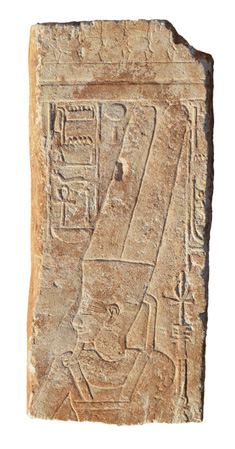
Distance from the cultural center of the kingdom might also explain a unique element in the design of the Sedeinga pyramids. Meroitic pyramids are typically constructed by building courses of stone bricks around rubble fill, but several monuments that the team has excavated at Sedeinga have a round masonry structure inside that would not have supported the walls of the pyramid. “They have no structural purpose,” says Francigny, who thinks they might be related to an older burial tradition in the area. Before pyramids came into fashion, the local custom was to bury people under earthen mounds and stone cairns. These round masonry structures, which would not have been visible, might be a continuation of this local tradition. Other finds at the site point to an enduring Egyptian influence. Fracigny and his team have discovered several examples of capstones in the shape of lotuses emerging from a solar disc. While most of the graves in the cemetery were plundered in antiquity, a few contained artifacts, such as a glazed faience figurine of the Egyptian fertility god Bes, that demonstrate links to Egypt. One man was even buried atop a prone stela taken from a nearby New Kingdom temple, built when Egypt ruled the region in the fourteenth century B.C.
Ties to Egypt might also explain the wealth that enabled the people of Sedeinga to erect so many pyramids. “Sedeinga is alone in the desert,” says Francigny. “But it was next to a road that connected the Kingdom of Meroe directly to the middle of Egypt.” In Meroitic times, Sedeinga was one of the first places in Nubia where Egyptian traders bearing goods such as glass and other luxury items could have stopped. “Maybe this is where trade with Egypt happened,” says Francigny. “Trade could explain the wealth of Sedeinga’s population, [which is] at a level hardly seen in the provinces of the Kingdom. The number of monuments reflects that power.” Today a road known as the “Forty Days Road” (so named because of the time it takes to traverse), takes the same route to Egypt as the ancient Meroitic road, and passes right by the cemetery. Sedeinga’s location, so close to an important trade route, ultimately came at a high cost to the monuments. Centuries of camel caravans passing through the site inevitably hastened the pyramids’ erosion. Even today, Francigny and his team have had to steer vast camel trains away from the site to keep them from trampling what remains of the pyramids, now 2,000 years old—about the same age Khufu’s pyramid was when the Nubians conquered Egypt.







